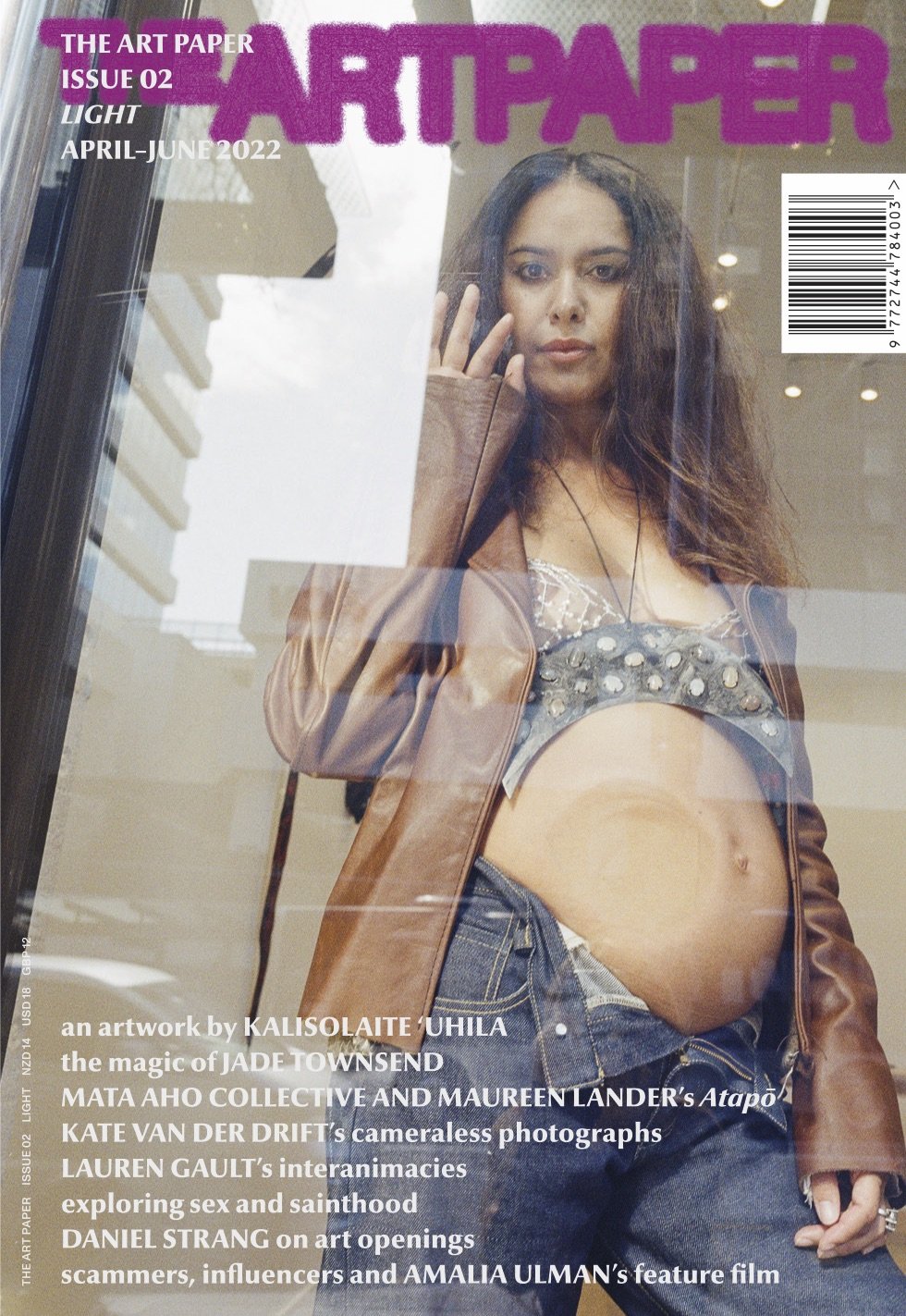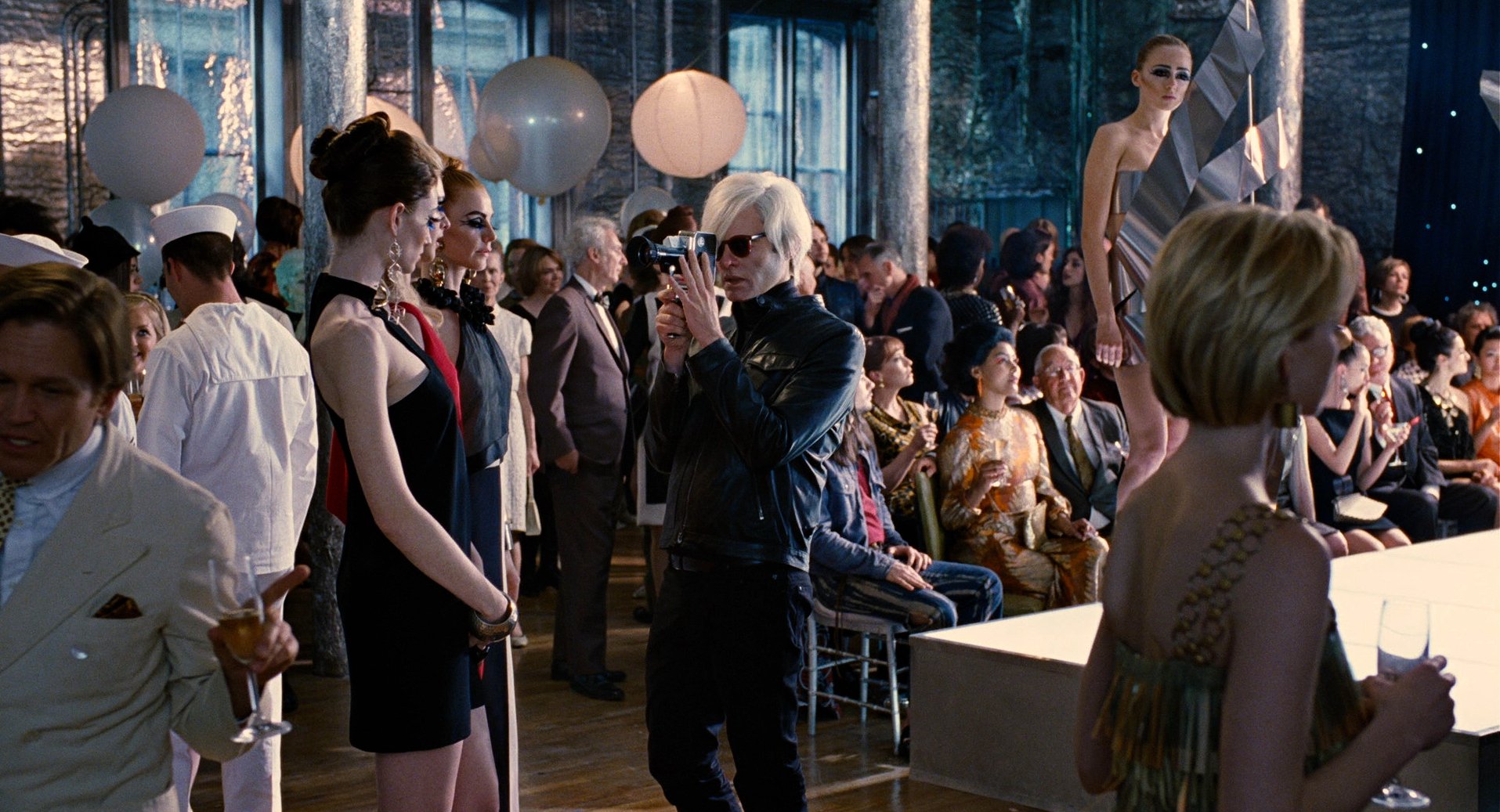Print archive: Smooth Signs
First published in The Art Paper Issue 02 — buy here.
Taylor J. Wagstaff, rbsog, 2021, oil on canvas, 37.5 x 57 cm. Photo: Alex North
To define The Vibe is impossible. You had to have been there, been online at that very moment to have caught a glimpse of the intangible and illusive aesthetic that we are all searching for. In the haywire era of digital natives, zoomer and millennial conflict, endless articles titled PLEASE DON’T BRING [insert name of new trend] BACK, our sole refuge lies within our algorithm, our explore pages. Taylor J. Wagstaff’s paintings are an attempt to capture The Vibe, to create a collection of works that can be used to define and understand a specific social category. Everything represented within Wagstaff’s work is carefully chosen to convey a generational proclivity for money, fame, and notoriety.
Taylor J. Wagstaff, Prada, Spring Summer 1991 (Adjusted to Fit), 2020, oil on canvas 140 x 105 cm. Courtesy of the artist and Coastal Signs. Photo: Alex North
In the novel Glamorama (1998) by Bret Easton Ellis the reader follows a group of models slash terrorists who use their glamour and influence as a subterfuge in a bid to destroy the world. The bric-a-brac mixture of luxurious items in Wagstaff’s paintings remind me of a passage in Glamorama when a bomb is planted on a plane and the only thing remaining is expensive pieces of luggage.
“...the majority of passengers on this flight were under thirty, and the debris reflects this: cell phones and laptops and Ray-Ban sunglasses and baseball caps...fashion magazines...wardrobes of Calvin Klein and Armani and Ralph Lauren hang from burning trees and there’s a teddy bear soaked with blood and a Bible...Prada purses still clasped and boxes of Calvin Klein boxer-briefs and so many clothes contaminated with blood and other body fluids, and everything reeks of aviation fuel.” (1)
Wagstaff knows the perfect concoction of irony and glamour that will cement his paintings into internet lore, to be endlessly shared and adored. Both this passage and Wagstaff’s work remind us of the inescapable allure of consumption. He weaponizes the trends that are represented within his paintings to attract us, like moths to a flame. Whether it be through the consumption of image, media, or clothing, many of us are wrapped in the never-ending battle between our desires and our conscience. The audience are like magpies, locked in on the Prada model (what is she wearing? Where is she going? Can I find that coat on the RealReal?), the Miu Miu shoes painted like an iridescent oil slick, the glitz of it all. We are constructing our own fantasies through his paintings, mesmerised by the status that each one represents. The Ray Ban paintings are reminiscent of the specific era of social media where everyone’s relatives on Facebook were being scammed and hacked by the Ray Ban scam. We all sat on our phones and laughed at the naiveté of it all, but are we being caught in a similar trap? Wagstaff’s delicately painted spider web plays on our desires for prosperity and beauty, you could have this too if you worked hard enough. Only we don’t need to be hacked to repost the image because our brains have been hacked by the internet.
If we were in an aeroplane crash, I wonder what debris we would leave behind. Second-hand designer clothing, various chargers, novelty keychains, iPhones, vapes, miscellaneous prescriptions, notebooks, laptops, Kindles, headphones and books, perhaps?
The images Wagstaff chooses to paint are ones we would see on obscure Instagram aesthetic accounts. They pander to our teenaged nostalgia, Kate Moss, septum piercings, softcore porn and anime screengrabs. The images we see in Wagstaff’s work are ones we’ve doubtless seen before, for a split second whilst doom scrolling, subliminally embedded in our minds. In conversation, Wagstaff mentions that he used to be Tumblr famous. It explains his obsessive devotion to collecting screenshots, through his paintings and social media presence.
Wagstaff warps his chosen reference image by placing it in a Photoshop file with the exact dimensions of his canvas and lets the machine do the rest of the work. He tells me that this is how he “objectifies” (2) the image. It makes sense to label it as objectification. He paints beautiful, warped women, expensive shoes, objects of lust and desire. The meaning of the image seems to change through the warping process. Almost as if they seem more attainable through this process, the status of the image is diluted through the objectification. Those Miu Miu’s seem to get a bit closer to our clammy little hands. Each painting holds a new world, whispering high-definition secrets to us. Disappear into the Los Angeles filter, crossfaded whilst filming yourself eating Mi Goreng instant noodles.
The better you look, the more you see. (3) I post because this is how I tell my story. We post to show our friends how cool we are. You re-post to show the world how tasteful you are. Once I saw Taylor jogging down Great North Road, I shouted his name three times and then he disappeared.
Footnotes:
(1) Brett Easton Ellis, Glamorama, (New York: Knopf, 1999), p. 904.
(2) Taylor Wagstaff in conversation with the author, 19 January 2022.
(3) Easton Ellis, p. 546.
Taylor J. Wagstaff, Girl Eats Noodles (Adjusted to Fit), 2021, oil on canvas, 140 x 105 cm. Photo: Alex North
Taylor J. Wagstaff, Miu Miu Shoe (Adjusted to Fit), 2021, oil on canvas, 140 x 105 cm. Photo: Alex North
Taylor J. Wagstaff, rb-wvp, 2021, oil on canvas, 40 x 40 cm. Photo: Alex North
Taylor J. Wagstaff, Punk Ear Earrings (Adjusted to Fit), 2021, oil on canvas 105 x 140 cm. Courtesy of the artist and Coastal Signs. Photo: Alex North
Taylor J. Wagstaff, Credit Card Chip (Adjusted to Fit), 2021, oil on canvas, 105 x 140. Photo: Alex North
This article appears in The Art Paper Issue 00. Purchase to read more.
Flashes and lumens and events and details, spiritual encounters, love and joy; occasional tears. Welcome to Issue 02 of The Art Paper.
Featured artists: Hilma af Klint, Sophia Al-Maria, Georgette Brown, Shane Cotton, Matilda Davis, Jeremy Deller, Lauren Gault, Domenico Gnoli, Felix Gonzalez-Torres, Lonnie Hutchinson, Eilen Itzel Mena, Derek Jarman, Paul Lee, Ross Manning, Mata Aho Collective and Maureen Lander, Liz Maw, Michael Morley, Ani O’Neill, Catherine Opie, Reuben Paterson, Ann Shelton, Jasmin Sparrow and Glen Prentice, Daniel Strang, Salome Tanuvasa, Sam Te Kani, Teuane Tibbo, Jade Townsend, Amalia Ulman, Kate van der Drift, Taylor J. Wagstaff, Anto Yeldezian, JinCheng Zhao.
Contributors: Lucinda Bennett, Zoe Black, Jo Bragg, Connie Brown, Franca Chase, Nina Dyer, Simon Gennard, Becky Hemus, Eilen Itzel Mena, Moya Lawson, Maya Love, Romily Marie Plourde Marbrook, KM Marks, David J. Martinez, Constance McDonald, Maia McDonald, Sam McKegg, Sophie Pagani, Nayan Patel, essa may ranapiri, Israel Randell, Hamish Sawyer, Emil Scheffmann, Cameron J. Taylor, Chris Tse, Eleanor Woodhouse, Anto Yeldezian, JingCheng Zhao.
Specs: 152 pages, 24.1 x 16.8 cm











Fergus Porteous on Shiraz Sadikeen, Ends; Coastal Signs, 15 September - 22 October 2022.